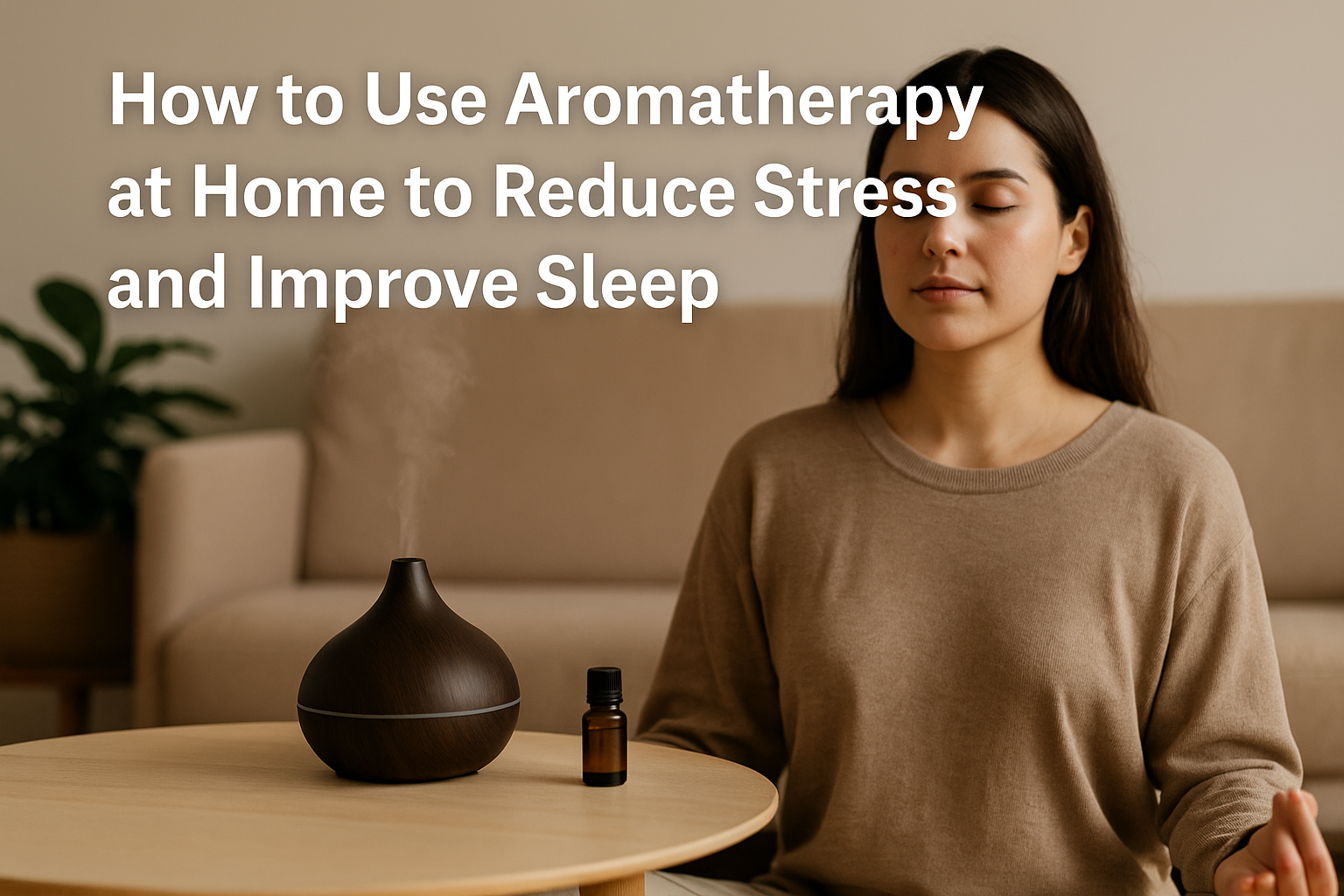Modern life brings constant pressure—work deadlines, family responsibilities, and endless digital distractions. Stress builds up and sleep often suffers.
Instead of relying only on medication or synthetic aids, many people are turning to aromatherapy at home. This ancient practice uses natural plant aromas to calm the nervous system, reduce anxiety, and support deep, restorative sleep.
The best part? Aromatherapy is simple, safe, and affordable. With herbs, essential oils, and DIY tools, you can transform your home into a sanctuary of relaxation.
This guide explains how aromatherapy works, the best oils and herbs to use, practical methods for daily life, and complete routines to fight stress and improve sleep.
Why aromatherapy works
The sense of smell is directly connected to the limbic system, the part of the brain that controls emotions and memory.
When you inhale essential oils or herbal aromas, molecules travel through the nose to receptors that trigger responses in the brain. Some scents calm, others energize, and many bring balance.
For stress and sleep, oils like lavender, chamomile, marcela, and sandalwood have been used for centuries. They slow the heart rate, relax muscles, and prepare the body for rest.
Benefits of aromatherapy at home
- Reduces stress: calming aromas help regulate cortisol levels.
- Improves sleep: certain scents trigger melatonin release and support deeper rest.
- Enhances mood: uplifting oils reduce anxiety and sadness.
- Accessible: sprays, candles, and diffusers make it easy to use daily.
- Natural: avoids chemical sleep aids or synthetic fragrances.
Best essential oils and herbs for stress and sleep
Lavender
Famous for its calming effect, it reduces anxiety and promotes better sleep quality.
Chamomile
Gentle and soothing, great for children and adults alike.
Marcela (Gaúcho herb)
Traditionally used for calming nerves and aiding digestion, its scent relaxes deeply.
Sandalwood
Grounding and warm, reduces mental chatter.
Orange
Sweet and uplifting, helps relieve stress without sedating.
Sage
Clears heavy energy and restores balance.
Methods to use aromatherapy at home
Diffusers
Add 6–8 drops of essential oil to water in an electric diffuser. Let it run for 30 minutes before bedtime.
Room sprays
Mix 200 ml water, 1 tsp alcohol, and 15 drops of calming oil. Spray on pillows, curtains, or air.
Aromatherapy candles
Soy or beeswax candles infused with lavender, chamomile, or sandalwood create both light and aroma.
Herbal sachets
Fill cotton bags with dried lavender, marcela, or chamomile. Place under pillows or in wardrobes.
Bath rituals
Add 8–10 drops of calming oil mixed with 1 tbsp carrier oil to warm bathwater.
Inhalation bowls
Add 3 drops of oil to a bowl of hot water, cover head with towel, inhale deeply for 5 minutes.
Daily routine with aromatherapy
Morning
Start with orange or rosemary oil in a diffuser for gentle energy without stress.
Afternoon reset
Spray lavender-orange mist in the living room or office to calm tension.
Evening transition
Light a marcela candle during dinner or reading time.
Pre-sleep ritual
Diffuse lavender-chamomile blend 30 minutes before bed. Place sachet under pillow.
DIY recipes for stress relief
Stress Relief Spray
- 200 ml water
- 1 tsp alcohol
- 10 drops lavender
- 6 drops orange
- 4 drops marcela
Calming Bath Blend
- 2 tbsp carrier oil
- 8 drops chamomile
- 6 drops sandalwood
Workday Reset Diffuser Blend
- 4 drops lavender
- 3 drops rosemary
- 2 drops orange
DIY recipes for better sleep
Pillow Spray
- 200 ml water
- 1 tsp witch hazel
- 8 drops lavender
- 6 drops chamomile
- 4 drops marcela
Sleep Support Candle
- 100 g soy wax
- 10 drops lavender
- 6 drops sandalwood
Deep Rest Diffuser Blend
- 4 drops marcela
- 3 drops lavender
- 2 drops sage
Cultural roots of calming aromas
In Gaúcho culture, marcela was used in teas and infusions to calm nerves before sleep. Lavender sachets were placed under pillows across Europe. Chamomile baths for children were common in many traditions. These rituals show that the healing power of scent has always been part of daily life.
Mistakes to avoid
- Using too much oil—strong aromas may cause headaches.
- Spraying directly on skin without dilution.
- Expecting instant miracles—aromatherapy builds consistency.
- Using stimulating oils like peppermint before sleep.
Frequently Asked Questions
Can I use aromatherapy if I have allergies?
Yes, but start with small amounts and choose gentle oils like chamomile or lavender.
Is it safe for children?
Yes, but always dilute. For kids under 2, use only herbal sachets, not essential oils.
How long should I run a diffuser?
30–45 minutes is enough. Longer sessions may cause overstimulation.
Can I mix different oils?
Yes, blends often work better. For example, lavender + orange balances calm and uplift.
Do oils lose effectiveness over time?
Yes, most last 1–2 years if stored in dark glass bottles away from heat.
Is aromatherapy enough for chronic insomnia?
It helps greatly, but severe cases may require lifestyle changes and medical guidance.
Conclusion
Aromatherapy is a simple yet powerful tool for reducing stress and improving sleep at home. With essential oils like lavender, chamomile, marcela, and sandalwood, you can create sprays, candles, sachets, and blends that transform daily life into moments of calm.
Every aroma becomes more than fragrance—it becomes a ritual of healing, tradition, and well-being. By practicing aromatherapy consistently, your home turns into a safe space where stress melts away and restful nights become the norm.

Marcela Cardozo is passionate about Southern Brazilian traditions and the cultural stories carried through natural scents. She blends knowledge of native herbs, essential oils, and regional rituals to create practical and inspiring content. Her writing connects ancestral wisdom with modern living, offering readers simple ways to bring authenticity, well-being, and meaning into their everyday lives.
